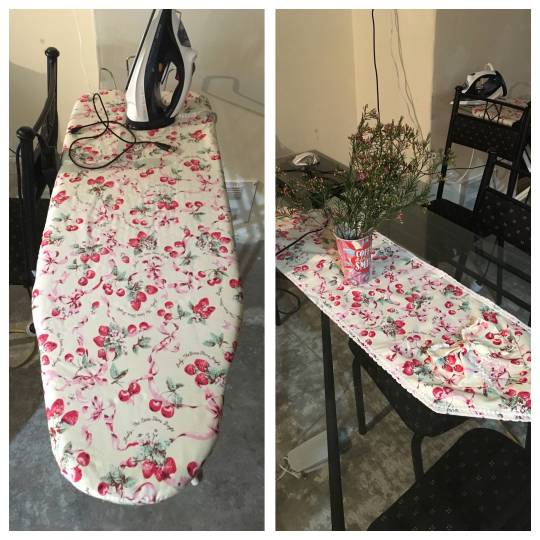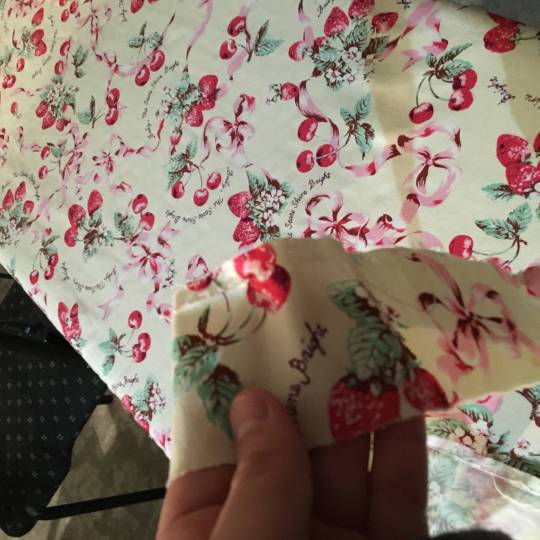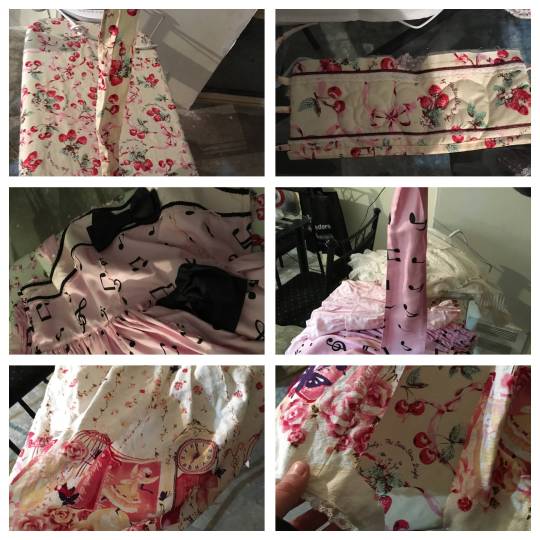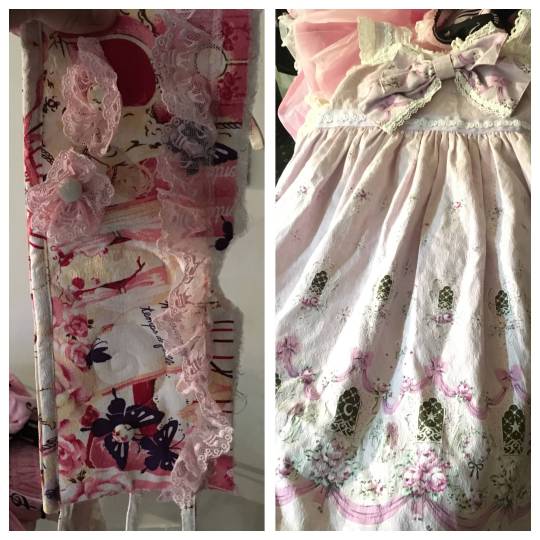#recycled concrete materials
Text
Can Weird Things be Used as Binder in Concrete?
In the quest to enhance the strength and durability of concrete, researchers and engineers often experiment with a myriad of unconventional materials. The idea is to explore whether these “weird” substances can function effectively as binders, the crucial ingredient that holds concrete together. This article delves into the fascinating realm of concrete science, examining the potential of various…

View On WordPress
#alternative concrete binders#binder performance in concrete#concrete additive research#construction innovation#construction material science#durability of weird concrete additives#eco-friendly construction practices#environmental impact of construction materials#green building trends#organic fiber reinforcement#recycled concrete materials#structural engineering advances#sustainable building materials#unconventional concrete binders#wool in concrete
0 notes
Text
Researchers on Wednesday said they were a step closer to solving one of the trickiest problems in tackling climate change—how to keep making cement despite its enormous carbon footprint.
In a world first, engineers from Britain's University of Cambridge have shown that cement can be recycled without the same steep cost to the environment as making it from scratch.
Cement binds concrete together but the whitish powder is highly carbon-intensive to produce, with the sector generating more than triple the emissions of global air travel.
Demand for concrete—already the most widely used construction material on Earth—is soaring, but the notoriously polluting industry has struggled to produce it in a less harmful way to the climate.
Continue Reading.
269 notes
·
View notes
Text
New modelling reveals that low-carbon concrete developed at RMIT University can recycle double the amount of coal ash compared to current standards, halve the amount of cement required and perform exceptionally well over time.
More than 1.2 billion tonnes of coal ash were produced by coal-fired power plants in 2022. In Australia, it accounts for nearly a fifth of all waste and will remain abundant for decades to come, even as we shift to renewables.
Meanwhile, cement production makes up 8% of global carbon emissions and demand for concrete -- which uses cement as a key ingredient -- is growing rapidly.
Addressing both challenges head-on, engineers at RMIT have partnered with AGL's Loy Yang Power Station and the Ash Development Association of Australia to substitute 80% of the cement in concrete with coal fly ash.
Read more.
15 notes
·
View notes
Text
Breakthrough to Circular and Emission-Free Building - Technology Org
New Post has been published on https://thedigitalinsider.com/breakthrough-to-circular-and-emission-free-building-technology-org/
Breakthrough to Circular and Emission-Free Building - Technology Org
The building industry faces enormous challenges. By 2050, the built environment must not only be emission-free, but also circular.
Within the NWA programme titled ‘Transition to a circular and emission-free building industry’, UT is contributing to research to facilitate the transition required to meet these challenges. UT researcher Marc van den Berg (Faculty of Engineering Technology) and colleagues are focusing on the digital aspects of supporting material reuse and recycling processes as part of this research.
Building – illustrative photo. Image credit: Pixabay (Free Pixabay license)
Renovation projects are complex challenges characterised by intensive decision-making and organisational activities. Such projects connect a variety of otherwise fragmented disciplines, including designers, builders and demolition companies.
Crucial for fostering more circular renovation practices with lower emissions is the availability of information on reusable materials and design strategies which factor in the preservation of existing value.
Collaborative, Digitised and Integral Processes to Achieve Circular and Emission-Free Renovation (PACER)
The PACER (Collaborative, Digitised and Integral Processes to Achieve Circular and Emission-Free Renovation) project, in which UT is represented, aims to provide collaborative, digitised, integral processes, tools, and legal and economic frameworks to achieve circular and emission-free renovation practices.
Dutch Research Agenda (NWA)
This programme of the Dutch Research Agenda (NWA) focuses on existing buildings and invites interdisciplinary consortia to investigate how buildings can be renovated in a circular and emission-free manner by studying a concrete case at the street or neighbourhood level. Societal and technical perspectives of circular and emission-free construction are jointly included.
Transition of the construction sector
The aim of the thematic NWA programme titled ‘Transition to a circular and emission-free building industry’ is to achieve breakthroughs and develop action perspectives that contribute to the transition of the building industry, primarily in relation to renovation projects. The NWA programme is organised in association with the Ministry of the Interior and Kingdom Relations, NWO and the Taskforce for Applied Research SIA.
Within the NWA programme, two broad multidisciplinary consortia will spend the next five years carrying out research to advance the transition to circular and emission-free building, with significant involvement of professional experts in the sector. The total funding awarded under the programme is approximately €2,865,000.
Read also the press release accompanying Marc van den Berg’s PhD research titled: ‘UT provides tools for circular demolition and design of buildings (utwente.nl)’
Source: University of Twente
You can offer your link to a page which is relevant to the topic of this post.
#000#Building#buildings#cellular recycling#Chemistry & materials science news#circular building#collaborative#Companies#concrete#construction#Design#designers#economic#emission-free#Emissions#engineering#Environment#factor#Faculty#Featured technology news#Funding#how#Industry#Legal#Link#material#material reuse#materials#Perspectives#photo
2 notes
·
View notes
Text
Little P.Eng. Engineering: A Comprehensive Dive into Structural Engineering Expertise
In the labyrinth of urbanization and infrastructure evolution, robust and innovative structural engineering solutions are of paramount importance. Standing as a beacon in this complex maze is Little P.Eng. Engineering. Recognized for its precision, innovative methodologies, and a holistic approach, the firm offers a gamut of services that range from foundation design to heavy industrial structure design. This article seeks to delve deep into the essence of Little P.Eng. Engineering's offerings and its role in reshaping the structural engineering landscape.
1. The Essence of Little P.Eng. Engineering
Beyond its technical expertise, Little P.Eng. Engineering embodies a philosophy: merging structural resilience with aesthetic elegance. The firm stands as a testament to the fusion of advanced technology and time-honored engineering principles.
2. Foundation Design: The Underpinning of Stability
Every monumental structure begins with a firm foundation. It's more than just laying concrete; it's about ensuring that what stands atop remains unwavering, come what may.
2.1 Site Analysis: A meticulous study of the terrain, soil properties, groundwater levels, and potential geotechnical challenges.
2.2 Choice of Foundations: Depending on the edifice, whether it’s a shallow, deep, slab, or mat foundation, Little P.Eng tailors solutions to meet specific needs.
2.3 Technological Edge: The firm embraces modern tools like ground-penetrating radar and soil liquefaction analysis, ensuring that the foundation design is fail-proof.
3. Concrete Structure Design: Molding the Future
Concrete is the canvas upon which modern infrastructural marvels are painted, balancing strength with moldability.
3.1 Concrete Composition and Quality: Every mix is a calculated decision, ensuring optimal compressive strength, durability, and workability.
3.2 Design Philosophy: With a balance of load-bearing capacity and aesthetic considerations, every concrete structure designed is both robust and visually appealing.
3.3 Reinforcement Dynamics: An integral aspect of concrete design, ensuring structures are fortified against both static and dynamic loads.
4. Steel Structure Design: The Alloy of Dreams
Steel's versatility and strength render it the material of choice for a spectrum of structures, from skyscrapers to bridges.
4.1 Steel Grade Selection: Depending on the project, whether it's a high-rise or a pedestrian bridge, the steel grade is selected to withstand specific stresses.
4.2 Structural Calculations: Ensuring that the steel members, be it beams, columns, or trusses, can handle imposed loads without deformation or failure.
4.3 Sustainability: The recyclable nature of steel resonates with Little P.Eng’s commitment to eco-friendly design solutions.
5. Steel Connection Design: Joining the Dots
While steel structures boast of strength, the connections are the unsung heroes ensuring overall stability.
5.1 Types of Connections: From simple bolted connections to intricate welded joints, each connection is designed considering load transfer mechanisms.
5.2 Rigidity and Rotation: Ensuring that connections offer the desired level of rigidity or allow rotations, depending on the design need.
5.3 Inspection and Quality: Every connection is examined to ensure it conforms to safety and quality standards.
6. Seismic Bracing Design: Withstanding Earth’s Fury
Earthquakes pose unique challenges, and Little P.Eng’s seismic bracing design stands as a shield against these natural calamities.
6.1 Seismic Data Analysis: Historical and predictive data are utilized to understand potential seismic threats.
6.2 Bracing Mechanisms: Depending on the structure and its purpose, various bracing systems, from cross-bracing to shear walls, are implemented.
6.3 Dynamic Response Analysis: Understanding how the structure would respond to seismic waves, ensuring minimal damage and maximum safety.
7. Heavy Industrial Structure Design: The Titans of Industry
For industries, structures aren't just buildings; they are the backbone of production and growth.
7.1 Load Considerations: Apart from static loads, dynamic and impact loads from machinery are factored into the design.
7.2 Material Selection: Depending on the industry, whether it's petrochemical, manufacturing, or power generation, material resistance to chemicals, heat, or radiation might be considered.
7.3 Expansion and Scalability: Industrial needs evolve, and Little P.Eng. ensures that their designs can accommodate future growth and modifications.

Little P.Eng. Engineering: A Comprehensive Dive into Structural Engineering Expertise
Conclusion
Little P.Eng. Engineering, through its broad spectrum of services, is redefining the boundaries of structural engineering. By fusing innovation with reliability, they are not just designing structures but crafting legacies that stand tall against the test of time.
Tags:
Little P.Eng. Engineering
Seismic Bracing
Structural Engineering
Material Selection
Sustainability
Structural Calculations
Structural Resilience
Bolted Connections
Load-bearing Capacity
Steel Connection
Connection Rigidity
Industrial Structure Design
Reinforcement Dynamics
Site Analysis
Load Considerations
Concrete Composition
Industrial Scalability
Infrastructure Evolution
Earthquake Safety
Recyclable Steel
Foundation Design
Bracing Mechanisms
Steel Grade Selection
Technological Edge
Welded Joints
Concrete Structure
Dynamic Response
Steel Structure
Structural Aesthetics
Seismic Data
Engineering Services
Structural Engineering Consultancy
Seismic Bracing Experts
Located in Calgary, Alberta; Vancouver, BC; Toronto, Ontario; Edmonton, Alberta; Houston Texas; Torrance, California; El Segundo, CA; Manhattan Beach, CA; Concord, CA; We offer our engineering consultancy services across Canada and United States. Meena Rezkallah.
#Little P.Eng. Engineering#Seismic Bracing#Structural Engineering#Material Selection#Sustainability#Structural Calculations#Structural Resilience#Bolted Connections#Load-bearing Capacity#Steel Connection#Connection Rigidity#Industrial Structure Design#Reinforcement Dynamics#Site Analysis#Load Considerations#Concrete Composition#Industrial Scalability#Infrastructure Evolution#Earthquake Safety#Recyclable Steel#Foundation Design#Bracing Mechanisms#Steel Grade Selection#Technological Edge#Welded Joints#Concrete Structure#Dynamic Response#Steel Structure#Structural Aesthetics#Seismic Data
0 notes
Photo

Stucco Exterior San Diego
Ideas for a mid-sized, one-story, Mediterranean-style home with a tile roof and stucco façade.
#exterior entry steps#concrete driveway#black trim window#arched entry#recycled materials#white exterior#custom landscape
0 notes
Photo

Los Angeles Fountain
Photo of a mid-sized eclectic partial sun backyard concrete paver water fountain landscape.
#recycled materials#decomposed granite#broken concrete#landscape#meadow garden#weathered steel#recirculating
0 notes
Text
"Discarded shells from restaurants and hotels are being used to restore damaged oyster ecosystems, promote biodiversity and lower pollution in the city’s bays...
Nestled in between the South China Sea and the Pearl River Delta, Hong Kong has been seen historically as an oyster hotspot. “They have been supporting our livelihood since ancient times,” says Anniqa Law Chung-kiu, a project manager at the Nature Conservancy (TNC) in Hong Kong. “Both oysters and their shells are treasures to humans.”
Over the past five decades, however, the city’s sprawling urban development, water pollution, as well as the over-harvesting and frequent seafloor dredging by the lime industry – which uses the crushed shells to make construction material – have destroyed Hong Kong’s oyster habitats and made the waters less hospitable for biodiversity.
The more oyster colonies falter, the worse the problem gets: oysters are filter feeders and purify water by gobbling up impurities. Just one Hong Kong oyster can filter up to 200 litres of water a day, more than any other known oyster species. But decades of rapid industrialisation have largely halted their water-purifying services.
The depletion of Hong Kong’s natural oyster reefs also affects the ability of local farmers to sustainably cultivate their oysters in a healthy environment, denting the reputation of the city’s 700-year oyster farming tradition, designated by Unesco as an “intangible cultural heritage”.
Inhabitants of the coast feel abandoned, says Ken Cheng Wai-kwan, the community leader of Ha Pak Nai on Hong Kong’s Deep Bay, facing the commercial city of Shenzhen in China. “This place is forgotten,” Cheng says. “Oysters have been rooted here for over 400 years. I ask the question: do we want to lose it, or not?”
A group of activists and scientists are taking up the challenge by collecting discarded oyster shells and recycling them to rebuild some of the reefs that have been destroyed and forgotten in the hope the oysters may make a comeback. They’ve selected locations around the island where data they’ve collected suggests ecosystems still have the potential to be rebooted, and there are still enough oyster larvae to recolonise and repopulate reefs. Ideally, this will have a positive effect on local biodiversity as a whole, and farming communities.
Farmers from Ha Pak Nai were among the first to hand over their discarded shells to the TNC team for recycling. Law’s team works with eight oyster farmers from Deep Bay to recycle up to 10 tonnes of shells every year [over 22,000 pounds]. They collect an average of 870kg every week [over 1,900 pounds] from 12 hotels, supermarkets, clubhouses and seafood restaurants in the city, including some of its most fashionable establishments. About 80 tonnes of shells [over 176,000 pounds] have been recycled since the project began in 2020.
Restaurants will soon be further incentivised to recycle the shells when Hong Kong introduces a new fee for waste removal – something that is routine in many countries, but only became law in Hong Kong in July and remains controversial...
Preliminary data shows some of the restored reefs have started to increase the levels of biodiversity, but more research is needed to determine to what extent they are contributing to the filtering of the water, says Law.
Scientists from the City University of Hong Kong are also looking to use oyster shells to increase biodiversity on the city’s concrete seawalls. They hope to provide tiny, wet shelter spots around the seawall in which organisms can find refuge during low tide.
“It’s a form of soft engineering, like a nature-based solution,” says Charlene Lai, a research assistant on the team."
-via The Guardian, December 22, 2023
#oyster#oyster farming#sea shells#seafood#hong kong#ecosystem restoration#biodiversity#ecosystem#water pollution#clean water#cultural heritage#marine life#marine animals#marine science#good news#hope
799 notes
·
View notes
Text
Hyahime presents: That time when a jsk became an ironing board cover..
Today i'm sharing a classic from cgl many of you have definitely heard about: The ironing board fiasco. The story of a girl, her dad's fiance and many feels.

Everything started when OP shared this image and said the following:
Due to some unusual circumstances, I'm currently living in a partially-renovated house with my dad and his fiancé.
His fiancé is a very sweet lady who is very thrifty. She makes all her own clothes and and will usually find a practical use for something, rather than throw it out (i.e recycling old bottles and jars to pot plants).
I had a Baby The Stars Shine Bright Strawberry and Cherry Ruffle jumperskirt that I didn't wear anymore, so I was planning to sell it. From memory, it cost about $400.
I put it out in the main room next to a pile of clothes I planned to donate to Good Sammies, so I'd remember to take photos of it for the sale. I then went away for a week to visit my grandparents
When I came back, I noticed the pile of clothes had disappeared. Cool, my dad and/or his fiancé had donated them for me. But wait… Where was the jumperskirt?
It was then that I saw the sight portrayed in the uploaded. My dress had been cut up to to make an ironing board cover and a tablecloth. I don't know where the rest of the material is.
It appeared that my dad's fiancé had assumed the jumperskirt was part of the donation pile, and thought there was no harm in 'recycling' it for her own uses. In her efforts to pretty up the concrete-y wasteland of a house, she had unknowingly destroyed an expensive brand dress.
Literally the only thing I could do in that moment was stare blankly. I can't even be mad at her, she had no idea.
So now I have a BTSSB ironing board and table cloth.
the story immediately caught the attention of users as they scrolled. Some found it terrible, others couldn't help but laugh..
Though some were quick to say it must've been fake.



So.. did OP fake this for attention? Let's investigate.
It is very unlikely the fabric was gathered from a replica, judging by the print details and the fact that this isn't a very sought-after or popular piece you'd see everywhere.

But how did one dress result in so much fabric?
Although it looks like a lot, one anon pointed this out:

But she knew she'd get the attention, right? ...yes, but I don't think anyone would come up with this specific odd way to recycle a lolita piece and make the community react.
OP responded to the questions and thoughts with the following:

At this point, some anons were pretty much just fighting over if it's okay for OP to be so calm or not. Which.. is a little bit weird. Others were more emotional about this than the victim themselves.



But what you may not know is.. there's more. There's more to the Kawaiironing fiasco.
Op comes back.

I queried the whereabouts of the remaining material and she showed me. She said my dad told her I was "throwing them out" (I have no idea where he drew that conclusion as i specifically said I was donating a bunch of clothes, so at the very least he should have assumed I was, you know, donating them), so she thought it was fine to cut up.
My fault anyway, didn't separate the "sell" pile from the "donate" pile.
HOWEVER…
There were a few other brand dresses I was planning to sell. I assumed they had been donated with the rest of my clothes, as they were nowhere to be found. I was a little sad about that (they were valuable Angelic Pretty, BBSTB and Metamorphose), but oh well.
Then I looked in her material bag and found they had also been cut up… When dad said I was "throwing THEM" out, he did not state a plural by accident… Pics to follow.



If anyone wants individual versions of those pics lemme know.
The loli gods frown upon me today for my unbecoming carelessness in handling burando.
Op decided to keep the truth a secret: ignorance is bliss, and her stepmother did not deserve to feel the guilt of ruining so much burando.. or to know that so many lolitas were in shambles knowing about her crafts.
..Although, anons said this wouldn't stop her from doing it again. Maybe she should know so she doesn't cut up even more dresses.

One thing is certain. that's a really cute ironing board cover. Maybe the fabric could become even more random burando stuff: headbows, little makeup bags, cup coasters, mats.. oven mitts?
Lolita home goods for all! we demand a cute life!(✧∀✧)/
#memorybox#eglfashion#jfashion#lolita fashion#egl#old school lolita#egl community#classic lolita#egl fashion#sweet lolita#gothic lolita
153 notes
·
View notes
Note
Can you help debunk what I have been told that solar panels are bad for the environment and cause more waste because they take a long time to decompose and wear out in a couple years?
Okay, let me try and answer this. Because yes, this is a more complicated issue, than a lot of people make it out to be.
So, let me start with the big thing that gets often overlooked: Without even looking into ressource use, big photovoltaic power plans have definitely a negative environmental impact. Not as a negative as anything fossil energy related, but negative never the less.
With power plants I mean those giant fields where we plaster photovoltaic panels over acres of land, to have a central power plant based around photovoltaic. And while we might not get around some of those big power plants, part of the energy revolution should be to move towards micro grids instead of current macro grids (so, decentralization), hence lowering the need of central powerplants.
Now, a lot of people who are anti-pv - mostly people who are from the fossil fuel lobby, but also some nuclear-lobby folks - tend to exaggerate those negative impacts... But they are still there. (Mostly having to do with depending on the type of pv panel used they can impact the ground temperature - and of course they just disrupt the environment.)
Sooo... Let's get to the raw materials. The important bit in photovoltaic is silicon. And this is one of the good old environmentalist "well actaully" things. Because when I was a kid I got told: "Oh, silicon is never a problem, because it is just sand! We have so much sand!" But of course I learned that it is not quite as easy. Because not all sand is created equal and not all can be used for stuff like concrete (which is shit either way), glass or photovoltaic.
Though still it is not as much of an issue as a lot of rare earth materials. Some of which are currently used in photovoltaic. But here is the other thing...
Photovoltaic is currently one of the fastest developing energy technologies. Basically anything I am gonna tell you here will be outdated next year. I guarantee.
But yes, in the creation of photovoltaic we currently use rare earth metals, that are at times sourced through bad means. Both in terms of it being mined through slave work and through the mining being done in a way that harms the environment. But... for one, we are currently working on reducing the need for rare earth metals in the creation of photovoltaic. And like with nuclear materials: We could mine the materials in a much more sustainable way - both on a social and ecological level. It is just that the current capitalist system has all the incentives to mine those materials wiht exploited workers or even slaves, and to not take care of the waste created in the mining operation.
And this gets us back to the recycling.
Short version: Yeah, we have ways to recycle about 65-80% of the materials in a photovoltaic panel. And like everything else: We are working on it and it will probably go up to 90%. But once again: Like with all recycling the issue is, that recycling materials is way more expensive than getting new materials. Which is why under capitalism all the things we could recycle often do not get recycled.
But it is possible.
tl;dr: Yes, there are drawbacks to photovoltaic, but it is not as bad as many make it seem. And a ton of the drawbacks are not inevitable but only exist because of capitalism.

#solarpunk#photovoltaic#solar#solar power#solar energy#recycling#environmentalism#sustainability#anti capitalism
119 notes
·
View notes
Text
Turning Trash into Treasure: The Scope of Waste Materials as Fillers in Construction
The construction industry is a major contributor to global resource consumption and waste generation. One approach to tackling this challenge lies in the innovative use of waste materials. This article explores the potential of waste materials as fillers in construction, examining the environmental and economic benefits, the vast range of usable waste streams, and key considerations for their…

View On WordPress
#asphalt fillers#building codes#building materials#C&D waste#circular economy#concrete fillers#construction industry#construction waste#demolition waste#environmental impact#fly ash#innovation#landfill waste#municipal solid waste#recycled materials in construction#regulations#research and development#rice husk ash#slag#standards#Sustainable Construction#virgin resources#waste fillers#waste management
0 notes
Text
Skyscrapers also feed off the architectural sector’s warped relationship with technology. Architectural historian Barnabas Calder has documented how building heights have progressively bumped up every time new, fossil-fuel-hungry technologies, equipment and materials emerged: structural steel that could carry increasing tension forces; hydraulic lifting equipment that did not need deep underground pistons; and mechanical fire suppression, air, heat and water supplies that could work to dizzying heights. Today, enthusiasts promise further ‘progress’, from new damping systems, advanced concrete admixtures and complicated diagrid structures. Across the world, the time, money and energy of the built environment sector is funnelled into expensive luxury developments, projects in needlessly challenging physical environments, and rebuilds of perfectly functional spaces. Skyscrapers are the ultimate symbol of a real-estate system that is diverting the construction sector away from the urgent, under-resourced task of retrofits, affordable home creation, maintenance and material recycling.
Martha Dillon, Death to the skyscraper
85 notes
·
View notes
Text
Researchers from the University of Cambridge have developed a method to produce very low emission concrete at scale -- an innovation that could be transformative in the transition to net zero.
The method, which the researchers say is "an absolute miracle," uses the electrically-powered arc furnaces used for steel recycling to simultaneously recycle cement, the carbon-hungry component of concrete.
Concrete is the second-most-used material on the planet, after water, and is responsible for approximately 7.5% of total anthropogenic CO2 emissions. A scalable, cost-effective way of reducing concrete emissions while meeting global demand is one of the world's biggest decarbonisation challenges.
Read more.
#Materials Science#Science#University of Cambridge#Concrete#Recycling#Environment#Cement#Materials processing
15 notes
·
View notes
Text
Using Schrödinger’s Mary Sue In Creative Writing
Every once in a while, out of nowhere, the idea of something like a cool fight scene, a witty exchange between the villain and hero or a very dramatic finale just ✨pop✨ into a writer’s head; usually accompanied with a sudden burst of inspiration. When those scenes involve established characters and stories, more often than not the writer regains consciousness several hours later having fully thought through the most epic thing they’ve ever written, contemplating weather or not they should rewrite the entire story to be able to properly include that scene.
But sometimes those scenes are just about A hero, A villain, A couple, not about someone specific. When that happens we often get stumped in the creative process because we have to sit down and actively create characters or fledge out vague character ideas we’ve had on the back burner to have material to continue the train of thought. And that usually kills that burst of inspiration.
That’s where what I call “Schrödinger’s Mary/Gary Sue” comes into play.
A SM/GS is a character concept for a specific archetype of character who possesses only the characteristics that you tend to give these archetypes, as well as all of the abilities for them that you came up with but weren’t able to include but wanted to.
To give an example, this is how my own SM/GS for the MC/Part Time Hero looks like:
- personality and appearance -
Vaguely Male
Light Hair
Kind (optional, might have been beaten out of them)
Intelligent
- abilities/roles -
Teleportation
Ghost sight
Half human / half spirit
Fox spirit
Dragon shifter
Follower of / reaper for the god of death
Genius magician and high priest
A planet throwing heavenly knight who helps the gods of creation fight evil gods from other dimensions
A literal god
Etc. etc. bc yes there is much more
That list on its own looks pretty Mary Suey. What makes that character a Schrödinger’s Mary Sue however is how to use them: Once that character has been placed into a scene their abilities are limited to just one, or if compatible and not over the top a few of those abilities.
This setup gives us the opportunity to experiment with not only that scene that originally came to mind but also old ideas that we didn’t want to abandon but couldn’t make work at that time. Basically what we’re doing is instead of playing with air, we play with an unpainted, unclothed, wig-less doll. It’s not concrete enough to just be copies of pre-existing characters but gives us enough substance to develop the scene; and if all goes well that doll won’t stay in that state for too long and become its own fully fledged out character.
(I used to really struggle with losing that burst of inspiration but since I’ve started using the SM/GS approach my brain has probably become the fastest and most effective recycling machine on the planet.)
Also, I you end up trying this for yourself, keep in mind to keep the SM/GS’s personality and characteristics as vague and basic as possible before going into the scene, else you risk writing the same character over and over again. Once you start working you can add proper personality traits and make a real character from that base concept. And of course, don’t be afraid to change those basic characteristics if you feel like it or the story develops into a direction that calls for it.
Happy writing :D
#writing#writers on tumblr#creative writing#tumblr writers#writeblr#authors of tumblr#writer on tumblr#writer problems#oc#writers#ao3 struggles#ao3 memes#ao3 writer#ao3#ao3 author#fic#fanfic#fanfiction#fan fiction#fan fiction writing#fic writing#oc lore#lore#books#bookblr#book#booklr#original comic#webtoon#webcomic
27 notes
·
View notes
Text
This is a BIG DEAL.
Cement production is one of the biggest sources of CO2 emissions that doesn't directly involve burning fossil fuels. Sure, making cement uses a lot of energy, but theoretically that energy could come from renewable sources that don't emit CO2. Even if it did though, the process of making cement basically involves baking limestone until CO2 and water are driven out of it, creating a substance called "clinker" that is ground down into cement powder. So, making new cement from limestone always emits a lot of CO2, no matter what energy source you use.
This research basically showed that you can use old crushed up concrete waste in place of the flux that is usually used in smelting/recycling steel. Flux creates a glassy slag on top of the molten steel that captures impurities and protects the metal from oxygen while its molten hot. Using concrete as flux basically re-bakes the concrete back into clinker, which can then be used to create more cement and new concrete, while not producing any new CO2 emissions because you're basically baking the CO2 that reacted with the cement to make concrete back out of it. Its like how burning wood doesn't increase the total amount of CO2 in the atmosphere, because the carbon in the tree originally came from the air. Its only digging fossilized carbon out of the ground and adding it into the air that's the problem.
This is a huge step towards decarbonizing our building materials, and it doesn't involve any fancy new technologies, or speculative processes. This could be done today in steel mills that currently exist, they'd just have to switch flux sources and start saving the slag.
What a brilliant piece of industrial research!
15 notes
·
View notes
Text

New SpaceTime out Friday...
SpaceTime 20240607 Series 27 Episode 69
Webb finds most distant known galaxy
Astronomers have detected the earliest known galaxy so far discovered – located a record breaking two hundred and ninety million years after the big bang.

Discovery of a massive new collection of exoplanets
Astronomers have just announced the discovery of no less than 120 confirmed and six new candidate exoplanets.





New X-ray observations highlight changes in two famous supernova remnants
NASA’s Chandra X ray telescope has undertaken new movies spanning two decades which are showing astronomers dramatic changes in two of the most famous objects in the sky – the Crab Nebula and Cassiopeia A supernova remnants.

The Science Report
Changes in global ocean circulation increasing the frequency and intensity of extreme cold events.
IVF kids have no overall increased risk of childhood cancer that the general population.
Recycled concrete and glass aggregates are increasing the recycling rate of waste materials.
Skeptics guide to how philosophers saw alien life
SpaceTime covers the latest news in astronomy & space sciences.
The show is available every Monday, Wednesday and Friday through Apple Podcasts (itunes), Stitcher, Google Podcast, Pocketcasts, SoundCloud, Bitez.com, YouTube, your favourite podcast download provider, and from www.spacetimewithstuartgary.com
SpaceTime is also broadcast through the National Science Foundation on Science Zone Radio and on both i-heart Radio and Tune-In Radio.
SpaceTime daily news blog: http://spacetimewithstuartgary.tumblr.com/
SpaceTime facebook: www.facebook.com/spacetimewithstuartgary
SpaceTime Instagram @spacetimewithstuartgary
SpaceTime twitter feed @stuartgary
SpaceTime YouTube: @SpaceTimewithStuartGary
SpaceTime -- A brief history
SpaceTime is Australia’s most popular and respected astronomy and space science news program – averaging over two million downloads every year. We’re also number five in the United States. The show reports on the latest stories and discoveries making news in astronomy, space flight, and science. SpaceTime features weekly interviews with leading Australian scientists about their research. The show began life in 1995 as ‘StarStuff’ on the Australian Broadcasting Corporation’s (ABC) NewsRadio network. Award winning investigative reporter Stuart Gary created the program during more than fifteen years as NewsRadio’s evening anchor and Science Editor. Gary’s always loved science. He studied astronomy at university and was invited to undertake a PHD in astrophysics, but instead focused on his career in journalism and radio broadcasting. He worked as an announcer and music DJ in commercial radio, before becoming a journalist and eventually joining ABC News and Current Affairs. Later, Gary became part of the team that set up ABC NewsRadio and was one of its first presenters. When asked to put his science background to use, Gary developed StarStuff which he wrote, produced and hosted, consistently achieving 9 per cent of the national Australian radio audience based on the ABC’s Nielsen ratings survey figures for the five major Australian metro markets: Sydney, Melbourne, Brisbane, Adelaide, and Perth. The StarStuff podcast was published on line by ABC Science -- achieving over 1.3 million downloads annually. However, after some 20 years, the show finally wrapped up in December 2015 following ABC funding cuts, and a redirection of available finances to increase sports and horse racing coverage. Rather than continue with the ABC, Gary resigned so that he could keep the show going independently. StarStuff was rebranded as “SpaceTime”, with the first episode being broadcast in February 2016. Over the years, SpaceTime has grown, more than doubling its former ABC audience numbers and expanding to include new segments such as the Science Report -- which provides a wrap of general science news, weekly skeptical science features, special reports looking at the latest computer and technology news, and Skywatch – which provides a monthly guide to the night skies. The show is published three times weekly (every Monday, Wednesday and Friday) and available from the United States National Science Foundation on Science Zone Radio, and through both i-heart Radio and Tune-In Radio.
#science#space#astronomy#physics#news#nasa#astrophysics#esa#spacetimewithstuartgary#starstuff#spacetime#nasa photos#jwst#hubble space telescope
8 notes
·
View notes